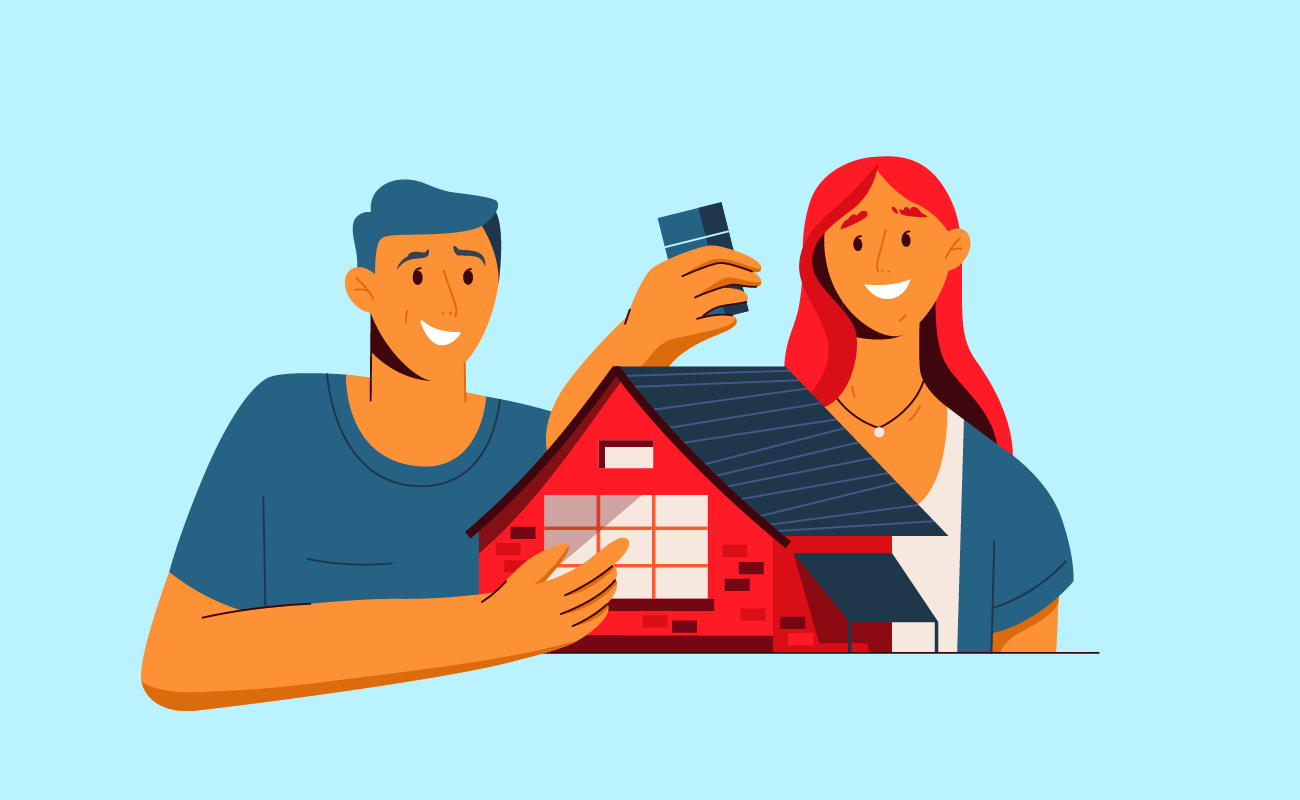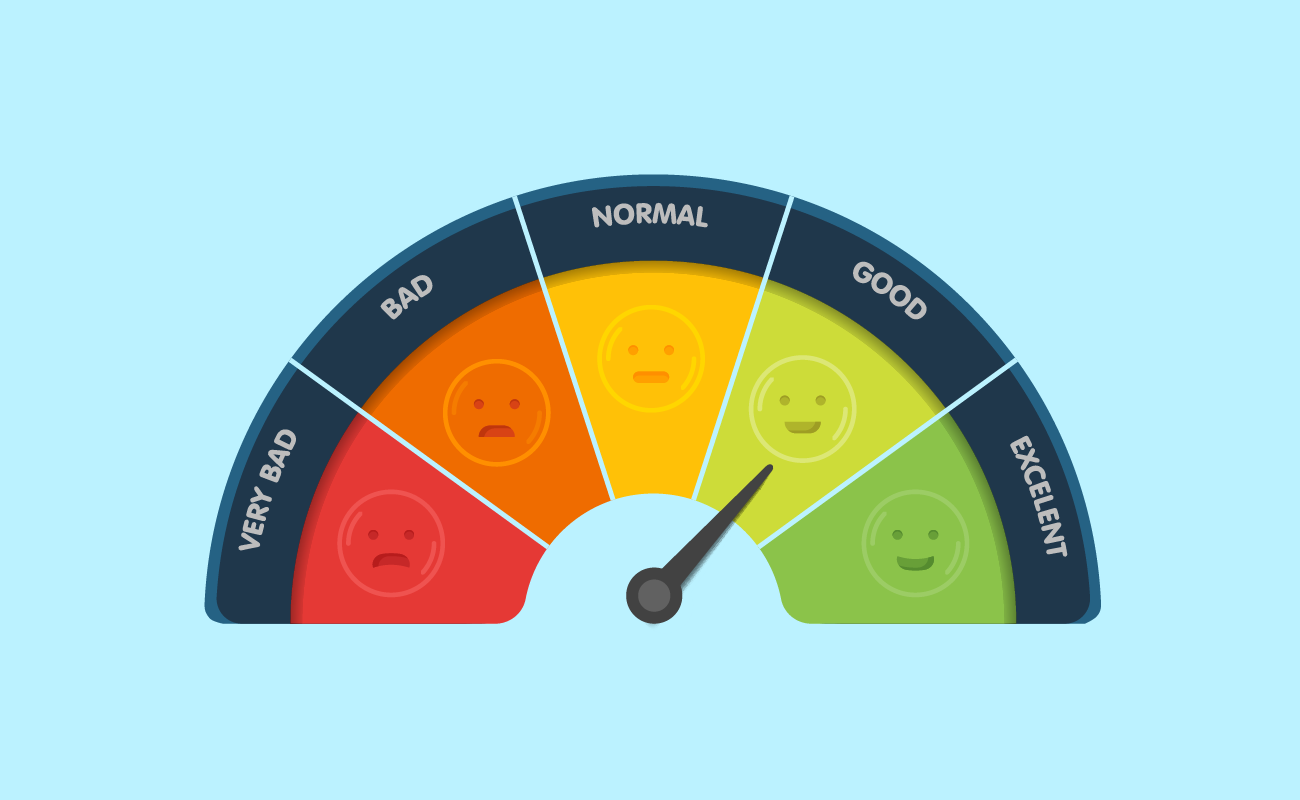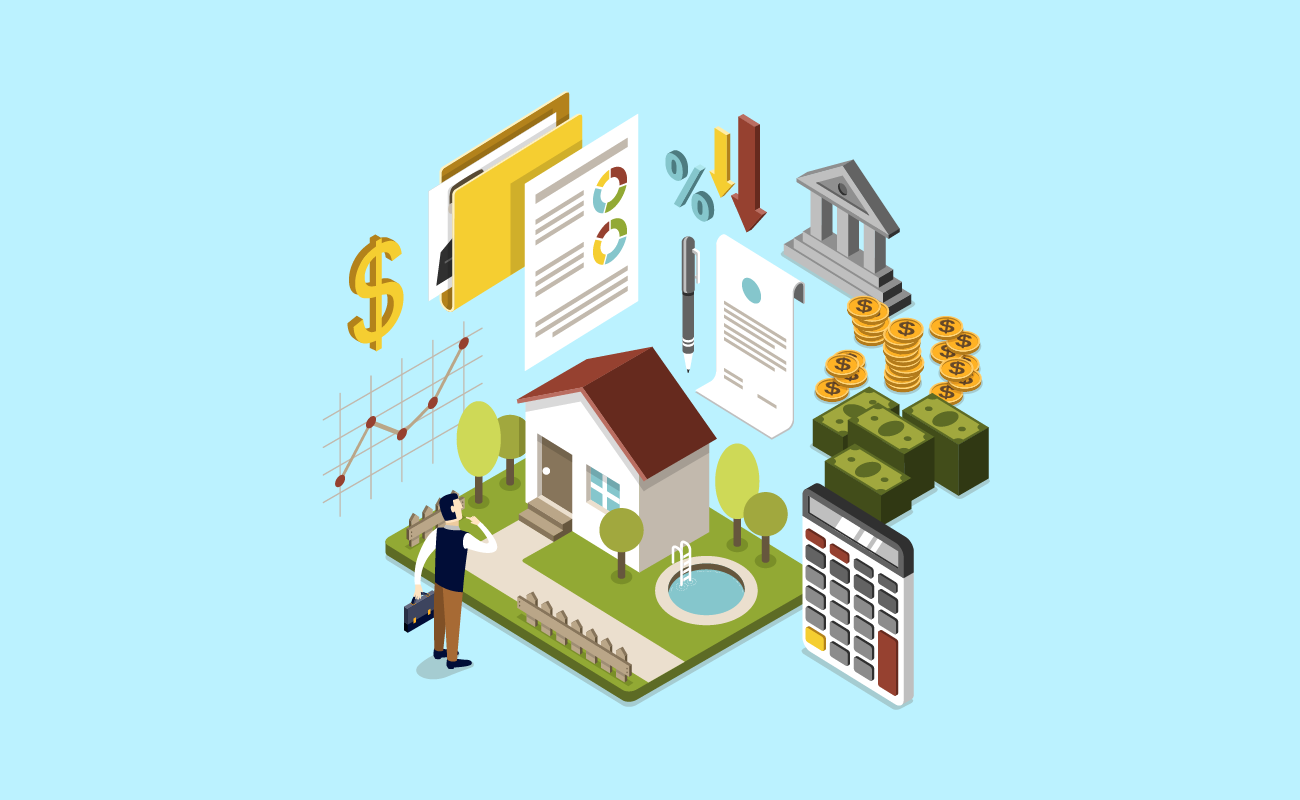
The first step in buying a house is determining your budget. The mortgage qualifier calculator steps you through the process of finding out how much you can borrow. You can calculate your mortgage qualification based on income, purchase price or total monthly payment.
For your convenience we publish current El Monte mortgage rates to help you estimate the price of various loan options and connect with a local lender.
The following table shows current El Monte 30-year mortgage rates. You can use the menus to select other loan durations, alter the loan amount, change your down payment, or change your location. More features are available in the advanced drop down.

Deciding to buy a house is a primary financial commitment. It’s one of the most expensive major purchases you’ll make in a lifetime. And for most people, it can take decades to pay down a mortgage.
Before you can buy your own property, there are several steps you must take to qualify for a loan. Mortgage lenders will evaluate your ability to repay your loan, as well as how much you might be able to borrow.
Our guide will introduce you to the basic mortgage qualifying process and discuss essential financial aspects you should prepare for. This includes your credit score, income, debt-to-income ratio, and your down payment. We’ll also talk about different types of home loans and their unique requirements, as well as other important information you need to know about qualifying for a mortgage.
Aspiring homeowners normally undergo two qualifying steps before they are approved for a mortgage. These steps are called mortgage pre-qualification and pre-approval. While both procedures similarly evaluate your creditworthiness, pre-approval has a greater influence on whether you can close a mortgage deal. And for first-time homebuyers, it’s crucial to get pre-qualified first to assess your general eligibility for a home loan.
Mortgage pre-qualification is an informal estimate of how much money you can borrow for a home loan. It usually takes just one to three days and can be done online or over the phone. A lender reviews your income, assets, and debts based on self-reported information. They do not perform hard inquiries on your credit report, which means it does not affect your credit score.
Pre-qualification is a good way to know if you meet minimum requirements to secure a mortgage. It’s a vital indicator, especially for first time homebuyers who need to improve their credit status.
Pre-approval is the next step that thoroughly evaluates your creditworthiness. This can take a few days to a couple of months, depending on the strength of your credit profile and whether you have complete documents. Applicants with low credit scores or history of missed debt payments take longer to obtain pre-approval. Evaluations are based on official financial documents that are verified by the lender.
A lender investigates the following factors before granting pre-approval:
Applicants must gather the following documents for a pre-approval application:
During pre-approval, you must provide your Social Security number and fill out a mortgage application. Lenders verify your income and employment by directly contacting your employer. They request for income information and other related credentials. Though most lenders only ask for a verbal confirmation, others might request for an email verification. Furthermore, expect lenders to perform a hard credit check on your credit report, which means it can impact your credit score.
For those who are self-employed, lenders confirm your income by reviewing tax return transcripts from the IRS. In general, obtaining a mortgage when you’re self-employed can be more challenging. You need to prove you have a reliable income source. Lenders are concerned with the viability of your business and whether you can sustain monthly mortgage payments. But once your lender sees your income is high and sustainable enough, you can get approved. It’s also a plus if you can show a large amount of cash reserves and pay a high down payment.
Once you receive a pre-approval letter, a lender approves a specific amount and includes a possible interest rate. Consumers who obtain pre-approval are perceived as more serious homebuyers. Sellers also request for a pre-approval letter once you’re ready to make a deal. But take note: Pre-approval letters are only valid for 60 to 90 days. So time your application accordingly. If you do not secure an offer within that time, you must reapply to get a pre-approval letter again.
The Pre-Approval Advantage Pre-approved homebuyers are perceived to offer more financial reliability than pre-qualified ones. While pre-qualifying allows you to assess your readiness for a mortgage, pre-approval is a conditional commitment from a lender to officially offer you a loan. This is why it holds more weight when it comes to securing a mortgage deal.

When qualifying for a mortgage, lenders rely on standard indicators that determine whether a borrower can repay a loan. These financial factors also influence how much they are willing to lend borrowers. Lenders will thoroughly evaluate your income and assets, credit score, and debt-to-income ratio.
One of the first things lenders assess for mortgage eligibility is income. This is a major factor because it shows how stable and predictable your finances are. Having a high income with stable employment lowers default risk for lenders. Thus, you have higher chances of qualifying for a mortgage with a long-term job and reliable sources of income.
Besides assessing your income from work, lenders also check any additional money you may receive. Take note: Additional income is only considered by lenders if the source can continue for 3 years. This includes money from sources such as:
Next, expect lenders to evaluate your assets. Borrowers with high-value assets are perceived as less risky by lenders. Assets are considered a valuable financial cushion that can protect you in case of emergencies. In the event of financial hardship such as sudden job loss or company closure, assets help keep you afloat while looking for another stable source of funds. To verify your assets, lenders request for the following documents:
Another important factor lenders watch out for is your debt-to-income ratio (DTI). This is a percentage that shows how much of your monthly income goes toward your debts. Specifically, DTI measures your total monthly debt payments compared to your gross monthly income.
A high DTI ratio indicates you’re overleveraged, which means you’re not in a good financial position to take on more debt. If you do get approved with a high DTI ratio, you’re likely assigned a higher interest rate. Likewise, a low DTI ratio is a sign you have enough money coming in to pay for your debts. This lowers the risk of defaulting on your mortgage.
Furthermore, expect conventional mortgages to have different DTI limits from government-backed loans. Let’s review the different types of mortgages below.
Most homebuyers generally choose conventional loans, which are not directly financed by the government. Conventional loans are usually packaged into mortgage-backed securities that are guaranteed by Fannie Mae and Freddie Mac. These are available through private lenders such as banks, credit unions, and mortgage companies.
PMI on Conventional Loans Private mortgage insurance or PMI is required for conventional mortgages when your down payment is less than 20% of the home’s value. This is an added fee that protects your lender if you fail to pay back your loan. PMI is typically rolled into your monthly payments, which costs 0.5% to 1% of your loan per year. It’s only required for a limited time, which is canceled as soon as your mortgage balance reaches 78%.
On the other hand, homebuyers can choose from the following government-backed loans.
MIP for Government-backed Loans When you obtain a government-backed mortgage such as an FHA or USDA loan, you’re required to pay mortgage insurance premium (MIP). This added fee protects your lender in case you default on your loan. MIP is usually rolled into your monthly payments, which costs between 0.80% to 0.85% of your loan per year. Unlike PMI for conventional loans, MIP for FHA and USDA loans are usually required for the entire payment term. For this reason, borrowers with government-backed loans eventually refinance into a conventional mortgage to remove this extra cost.
Since different loans cater to different needs, DTI limits vary per type of mortgage. The table below details the front-end and back-end DTI requirements for conventional and government-backed mortgages:
| Loan Type | Front-end DTI Limit | Back-end DTI Limit |
|---|---|---|
| Conventional | Most lenders prefer 28% | Maximum is 50% with compensating factors Most lenders accept 43% Should Ideally be 36% |
| Jumbo | Most lenders prefer 28% | Maximum is 50% with compensating factors Most lenders accept 43% Should Ideally be 36% |
| FHA | Should not exceed 31% If your DTI is 46.9%, you cannot be approved via Automated Underwriting System | Should not exceed 43% if your FICO score is 620 Can accept 50% if your FICO score is over 620, but many lenders may have stricter standards |
| VA | Back-end DTI is the main basis. | Lender’s benchmark is 41% Varies per lender |
| USDA | Between 29% to 32% Can be higher with compensating factors | Should not exceed 41% |

Proposed Changes for Mortgage Qualifications
In June 2020, the Consumer Financial Protection Bureau (CFPB) announced steps to address GSE patches, suggesting that the DTI ratio can be removed as a primary requirement to qualify for mortgages. To take its place, lenders would have to rely on loan pricing information as the main basis for mortgage approval. CFPB concluded that a price-based approach is a stronger indicator and more flexible way to measure a borrower’s ability to repay compared to DTI alone.

A credit score is a three-digit rating that suggests how reliable you are as a borrower. The higher your credit rating, the greater chances you have for mortgage approval. It’s an indicator that shows how creditworthy you are for lenders. Credit scores are based on your credit report, which breaks down details like your payment history. It also shows how much of your available credit you’re using at a given time.
The result of your credit report is based specifically on the following financial factors:
To obtain a conventional loan, many lenders prefer to approve a credit score of 680 and above (though some might approve a score as low as 620). For government-backed loans, credit score requirements are more lenient. If you have a low credit rating, you may be able to qualify for a government-backed loan.
The following are required credit scores for government-backed mortgages:
| Government-backed Mortgage | Credit Score Requirement |
|---|---|
| FHA | 500 is the minimum, 580 & above is ideal |
| VA | Flexible credit standards, but ideally 620 & above |
| USDA | Should be at least 640 |
Credit scores reflect a borrower’s level of risk, which is why lenders prefer applicants with high credit ratings. If you’re habitually late with payments or have records of delinquencies, it will reflect a poor credit score. Likewise, if you pay your bills on time and keep your debts within a manageable amount, your credit score will be higher. It’s a sign that you’re a diligent consumer that does not take on too much debt.
Borrowers with excellent credit scores often obtain the lowest rates and the most favorable deals. Meanwhile, lenders impose a higher rate if you have a lower credit score. This helps protect them in case you default on your loan.
Improving Your Credit Score Before you apply for a mortgage, be sure to get a copy of your credit report. Borrowers may request a free copy every 12 months. You may ask for a free copy at AnnualCreditReport.com. 
If you have a poor credit rating, the National Foundation for Credit Counseling (NFCC) states that it can take 12 months to 24 months before your credit score improves. You can raise your credit score by paying bills on time and significantly decreasing your credit card balance. Make sure to check your credit report for errors, such as wrong addresses and unrecorded payments. Disputing inaccuracies to your credit bureau can help increase your credit rating.
Credit scores range between 300 to 850 and are based on standards used by a credit reporting agency. The most widely used credit rating system ins FICO or the Fair Isaac Corporation, which is used by 90% of lenders in the U.S. It also takes data from three major credit reporting bureaus (Experian, Equifax, and TransUnion) to determine consumers’ credit ratings. Another credit rating classification system used by lenders is VantageScore, which has a slightly different scoring system from FICO.
The tables below show score range classifications for both FICO and VantageScore credit rating systems:
| Scores | FICO Classification | Effect on Rates |
|---|---|---|
| 800 – 850 | Exceptional | Obtains the best available mortgage rates. |
| 740 – 799 | Very Good | Receives better than average rates. |
| 670 – 739 | Good | Will likely get approved for credit. |
| 580 – 669 | Fair | Subprime borrowers who are charged a higher rate. |
| 300 – 579 | Very Poor | Will not likely be approved for credit. |
| Scores | VantageScore Classification | Effect on Rates |
|---|---|---|
| 781 – 850 | Excellent | Receives the best rates at favorable terms. |
| 661 – 780 | Good | Will get approved with competitive rates. |
| 601 – 660 | Fair | May be approved but not with competitive rates. |
| 500 – 600 | Poor | May be approved but assigned with a higher rate. |
| 300 – 499 | Very Poor | Will not likely be approved for credit. |
Under the FICO rating system, scores between 670 to 739 are classified as “Good” or likely to be approved for a mortgage. Meanwhile, with VantageScore, scores between 661 to 780 have high chances of approval with competitive rates. Aim to keep your credit score within these score brackets (or raise it higher) to obtain favorable rates on your loans.
Before buying a house, be sure to give yourself enough time to save for a down payment. While the amount depends on your budget, the home’s price, and the type of loan you have, most financial advisers recommend saving for a 20% down payment. This is a sizeable amount, which is more expensive if your home’s value is higher.
In September 2020, the median sales price for new homes sold was $326,800 based on data from the U.S. Census Bureau. If this is the value of your home, you must save a down payment worth $65,360. Paying 20% down lowers risk for lenders. It’s a sign that you can consistently save funds and reliably pay back your debts.
Down Payments Vary Down payment requirements are different per type of loan. However, many conventional mortgage lenders require at least 5% down. For government-backed loans such as an FHA loan, a borrower with a credit score of 580 can make a down payment as low as 3.5% on their loan. Take note: A smaller down payment subjects you to a higher interest rate.
Though 20% is the recommended down for a mortgage, in reality, this is not affordable for most borrowers. First-time homebuyers usually make lower down payments. In a report by Experian, they gathered 2018 data from the National Association of Realtors and Relator.com. Their research found that the median down payment for all homebuyers in 2018 was only 13%, while first-time homebuyers only spent 7% down. Repeat homebuyers, on the other hand, only paid as much as 16% down payment on a house.
Nonetheless, it’s still worth making a larger down payment on your mortgage. Here’s why paying 20% down is more beneficial for homebuyers.
Know the Closing Costs Aside from the down payment, mortgages come with closing costs. These are fees you pay your lender to process your mortgage. Closing costs are generally 2% to 5% of your loan amount. According to ClosingCorp, in 2019, the average national closing cost for a single-family home was $5,749. This is a considerable sum, so don’t forget to include it when you’re budgeting for your mortgage.

To help you get started, you can use our calculator on top to estimate the home price, closing costs, and monthly mortgage payments you can afford based on your annual income. For our example, let’s suppose you have an annual income of $68,000. You’re looking to get a 30-year fixed-rate loan at 3.25% APR. For your down payment and closing costs, you’ve saved $55,000. See the results below.
| Mortgage Costs | Resulting Amount |
|---|---|
| Estimated House Price | $305,193 |
| Estimated Loan Amount | $252,720 |
| Total Monthly Mortgage Payment | $1,587 |
Based on the table, if you have an annual income of $68,000, you can purchase a house worth $305,193. You may qualify for a loan amount of $252,720, and your total monthly mortgage payment will be $1,587. Since your cash on hand is $55,000, that’s less than 20% of the home’s price. This means you have to pay for private mortgage insurance (PMI). Take note: This is just a rough estimate. The actual loan amount you may qualify for may be lower or higher, depending on your lender’s evaluation.
The following table breaks down your total monthly mortgage payments:
| Monthly Payment Breakdown | Resulting Amount |
|---|---|
| Principal & Interest payment | $1,099.85 |
| Property Taxes | $254.33 |
| Home Insurance | $127.16 |
| Private Mortgage Insurance (PMI) | $105.30 |
| Total Monthly Mortgage Payment | $1,587 |
According to the table, your principal and interest payment is $1,099.85. When we add property taxes and home insurance, your total monthly mortgage payment will be $1,481.34. But because you must pay PMI, it adds $105.30 to your monthly payment, which results in a total of $1,587 every month.
To avoid PMI, try to save 20% of the home’s price, which is $61,038.6. To cover your closing costs, you must save an additional 2% to 5% of your loan amount. If your closing cost is 2% of your loan, you should save an added $5,054.40.
The example above gives you a better idea how much house you can afford, as well as how much down payment and closing costs you must prepare to save for your mortgage.
Most first-time homebuyers are people who are still building their income. Thus, many of them choose a 30-year fixed-rate mortgage, which is a predictable payment structure that makes mortgage payments more manageable. The rate is locked for the entire life of the loan, which means your principal and interest payments will not change. This is the opposite of an adjustable-rate mortgage (ARM), which comes with rates that change after the introductory period.
Fixed-rate loans are a good fit for borrowers who want a convenient way to budget their mortgage payments. This is appealing to most consumers because it ensures monthly payments stay within an affordable range. It also follows a traditional amortization schedule that shows the exact number of payments you must make within the agreed term. For example, with a 30-year fixed-rate mortgage, your payments are spread throughout 360 monthly payments. Your loan will surely be paid within 30 years as long as you pay as scheduled.
Besides the 30-year fixed term, fixed rate loans also come in 10-year, 15-year, and 20-year terms. More homebuyers take 30-year fixed mortgages because they have lower monthly payments. On the other hand, a short term requires higher monthly payments to pay off your loan within a sooner time frame.
Take note: Choosing a longer term comes with higher interest charges. To save, many homeowners with 30-year fixed mortgages eventually refinance into a shorter term when market interest rates are low.
30-Year Fixed vs. ARM Market Share Thirty-year fixed-rate loans are the most widely used home financing tool in the country. In August 2020, 30-year fixed-rate mortgages accounted for 73.9% of new originations in the U.S., according to the Urban Institute. Meanwhile, adjustable-rate mortgages only accounted for 1.1% of new loan originations in August 2020.
Adjustable-rate mortgages (ARM), on the other hand, have interest rates that change depending on market conditions. ARMs usually start with a low introductory rate or teaser period, after which the rate changes annually for the remaining term.
ARMs come in 30-year terms that can be taken as a straight adjustable-rate mortgage with rates that change annually right after the first year. However, borrowers usually take them as a hybrid ARM, which come in 3/1, 5/1, 7/1, and 10/1 terms. For example, if you get a 5/1 ARM, your rate remains fixed for the first 5 years of the loan. After the 5-year introductory period, your rate adjusts every year for the rest of the payment term.
When does taking an ARM make sense? ARMs are usually chosen by consumers who plan to sell their house in a few years or refinance their loan. If you need to move every couple of years because of your career, this type of loan might work for you. ARMs usually have a low introductory rate which allows you to make affordable monthly payments, at least during the teaser period. Before this period ends, you can sell your home, allowing you to avoid higher monthly payments once market rates start to increase.
Moreover, homebuyers who purchase jumbo loans also take advantage of ARMs. With low introductory rates, they can make low monthly payments during the teaser period. With such a large loan, they’d definitely benefit from the low rate, even if it’s just for the first few years. But when rates increase, in due course, homeowners with ARMs eventually refinance into a fixed-rate loan to lock in a low rate.
Of course, ARMs are not for everyone. If you can’t sell your house or refinance on time, you must make sure you can cover increasing monthly payments. This is risky especially if you have a tight budget. Otherwise, you might miss payments. To be safe, more homebuyers usually choose fixed-rate mortgages over ARMs.

The road to homeownership requires ample financial preparation. Lenders assess different financial factors to gauge your creditworthiness. Before you can obtain a mortgage, you must undergo a qualification process.
The mortgage pre-qualifying process is an informal assessment of your ability to repay a loan. This provides you a ballpark estimate of how much you can borrow from a lender. It also gives you an overall picture of whether you satisfy minimum requirements for a mortgage. Meanwhile, the pre-approval process is based on documents that are verified by your lender. It’s a more thorough evaluation of your creditworthiness which includes the precise loan amount a lender is willing to offer. Pre-approval is basically a conditional commitment from a lender to officially grant you a loan.
Once you have a pre-approval letter, it’s an indication that you’re a serious homebuyer. Sellers also usually ask for a pre-approval letter when you’re ready to make a deal. It’s valid for only 60 to 90 days, so don’t take too long to shop for a house.
When qualifying for a mortgage, besides having adequate income, it’s important to have a good credit score. Lenders also check your debt-to-income ratio and assets. A high credit score allows you to obtain a much lower rate. It’s also worth paying 20% down payment to lower your monthly payments and avoid the added cost of PMI on a conventional loan. Improving these primary financial factors help increase your chances of qualifying for a mortgage.
Explore conventional mortgages, FHA loans, USDA loans, and VA loans to find out which option is right for you.
Check your options with a trusted El Monte lender.
Answer a few questions below and connect with a lender who can help you save today!